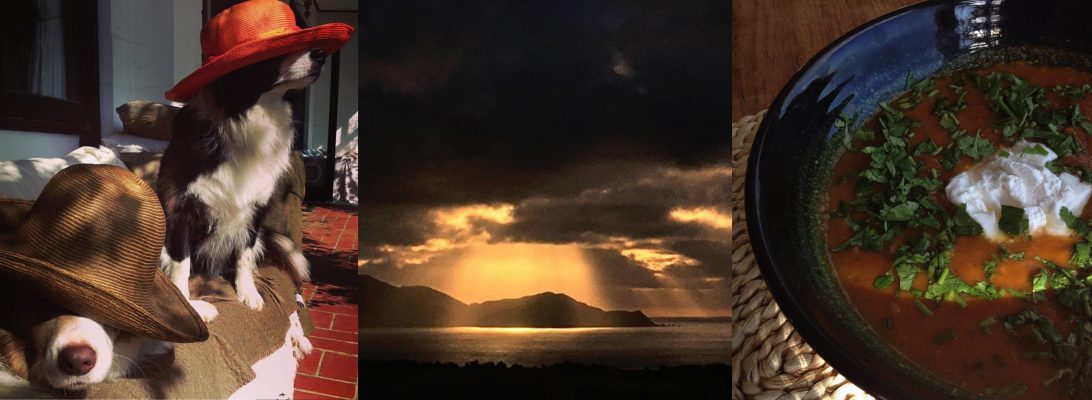In the last few weeks of 2011, I wrote a post entitled a tale of a pretty green dress in which I describe my experience of buying a dress from the Wellington clothing store Goodness. I’d bought the dress primarily to wear to a wedding and everything went according to plan (i.e. I enjoyed wearing it) until while searching for the washing instructions, I discovered a little white label which simply said ‘Made in China’. Unable to find any further information, I promised myself – and any of you who read the original post – that I’d go back and speak with the gals at Goodness. I did. However Christmas, time away from the computer and the beginning of a busy year have intervened and it’s taken me a while to provide you with a postscript.
The owners of Goodness, Justine and Chris, were helpful and generous with information. The green dress was apparently made in a very small factory in China and both women have visited the factory several times. In Chris’ words “all of our clothes are manufactured in very short runs by a small family business, owned and run by two of the loveliest women you could hope to meet. They are sisters”.
In response to my query as to where the fabric came from, the response was “We buy our fabrics from a couple of local markets in Shezhen China. The store owners are all small family businesses also. I’m sorry I’m not able to tell you exactly (because we dont know) where the materials are manufactured or whether they are certified only that we are very careful to support the local people and their families“.
Knowing more about of the dress does undoubtedly alters my experience of wearing it. My perception of the little white label simply saying ‘Made in China’ shifts with awareness that ‘two of the loveliest women you could hope to meet’ own and run the factory in which it was made. I still have questions (yes, concerns) about where the factory was made and how, the process and the people. But it certainly makes a difference knowing that the designers choose their suppliers with care.
Polyurethane
Still on the subject of ‘looking at the label’, last week I walked into work in my gym gear forgetting to take the appropriate bra for the dress I had to change into. The sports bra wasn’t an option and so I had to make a quick bra purchase. I wore the Berlei bra happily for the rest of the day but – and you may have some sense of where this is going if you’ve read the original post on the pretty green dress – that night I looked at the label on the inside of the garment and the first thing I read was ‘nylon polyester elastene with polyurethane padding’.
Hmmm.
A quick google search confirmed my initial thoughts on polyurethane, ‘a synthetic resin in which the polymer units are linked by urethane groups, used chiefly in paints and varnishes’. Not something, I have to say, which would leap to mind if asked to list the materials used to make a bra.
However, it turns out that polyurethane, in a number of forms, including foam, is used in a very large number of consumer products. And a couple of hours of online research turned up the following information on the website of O Ecotextiles, a Seattle based company created by two women who wanted to ‘to change the way textiles are made by proving that it’s possible to produce luxurious, sensuous fabrics in ways that are non-toxic, ethical and sustainable’. This is from their page addressing foam for upholstery cushions:
“Polyurethane foam is a by-product of the same process used to make petroleum from crude oil. It involves two main ingredients: polyols and diisocyanates:
- A polyol is a substance created through a chemical reaction using methyloxirane(also called propylene oxide).
- Toluene diisocyanate (TDI) is the most common isocyanate employed in polyurethane manufacturing, and is considered the ‘workhorse’ of flexible foam production.
- Both methyloxirane and TDI have been formally identified as carcinogens by the State of California
- Both are on the List of Toxic Substances under the Canadian Environmental Protection Act.
- Propylene oxide and TDI are also among 216 chemicals that have been proven to cause mammary tumors. However, none of these chemicals have ever been regulated for their potential to induce breast cancer.
Oh.
Let me be very clear, I’m not a scientist, let alone a chemist. I have, as I’ve said, simply spent a few hours researching online but frankly I’ve read enough to lead me to say that I’d prefer not to wear a product made from polyurethane next to sensitive tissue.
Where to from here?
Three things. Firstly, I’ll keep abreast of the issue. Sorry, couldn’t resist. But I will. A class action was launched a couple of years ago in the U.S. against Victoria’s Secrets with respect to their use of polyurethane padding in bras and I’ll be interested to see where that goes. Secondly, because of my two recent experiences of being surprised by the label I will endeavour to consider my consumer decisions a little more carefully and even when moving at speed, pause and check the ‘ingredients’. Finally, I’d really like to hear about any enlightening consumer experiences you’ve had!

